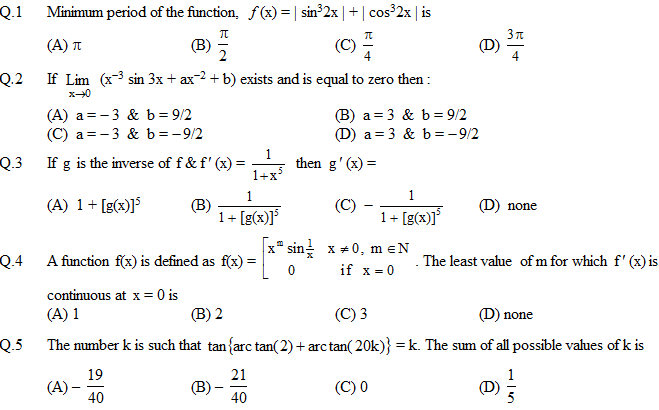1) C
2) A
3) B
4) C
5) A
4 Answers
Manish Shankar
·2014-03-07 06:16:46
Answers:
1. C
2. A
3. A
4. C
5. A
 Akshay Ginodia sir can u plz explain 2 and 4 ?Upvote·0· Reply ·2014-03-07 07:13:39
Akshay Ginodia sir can u plz explain 2 and 4 ?Upvote·0· Reply ·2014-03-07 07:13:39
Shaswata Roy
·2014-03-07 08:39:00
1)(C)
2)(A)
Given expression:
limx→0 x-3[3x-(3x)33!+.....]+ax2+b
= limx→0 1x2(3+a) +(-276+b) +....
The rest of the terms are equal to 0.
Therefore,
3x2 +ax2=0
-276+b = 0
3)(A)f(g(x))=x
Differentiating both sides,
f'(g(x))*g'(x)=1
→g'(x)=1f'(g(x))=1+[g(x)]5
4)(C)
f'(x)= mxm-1sin(1x)-xm-2cos(1x) for x≠0
and
f'(x)= 0 for x = 0
sin and cos of any number lies between 0 and 1.
Hence for limx→0f'(x) to be 0 limx→0xm-2 should be 0.
The smallest natural number m satisfying this condition is 3.
5)(A)
arctan(2)+arctan(20k)=arctan(k)
arctan(2+20k1-40k)=arctan(k)
→ 40k2+19k+2=0
Sum of roots = -1940
